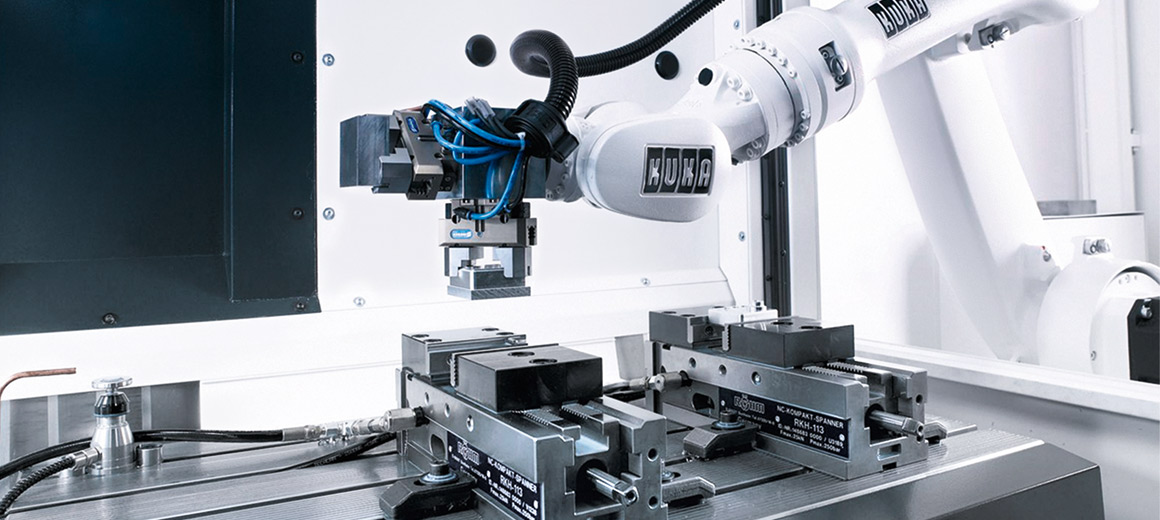
PC-based control for handling, production and assembly
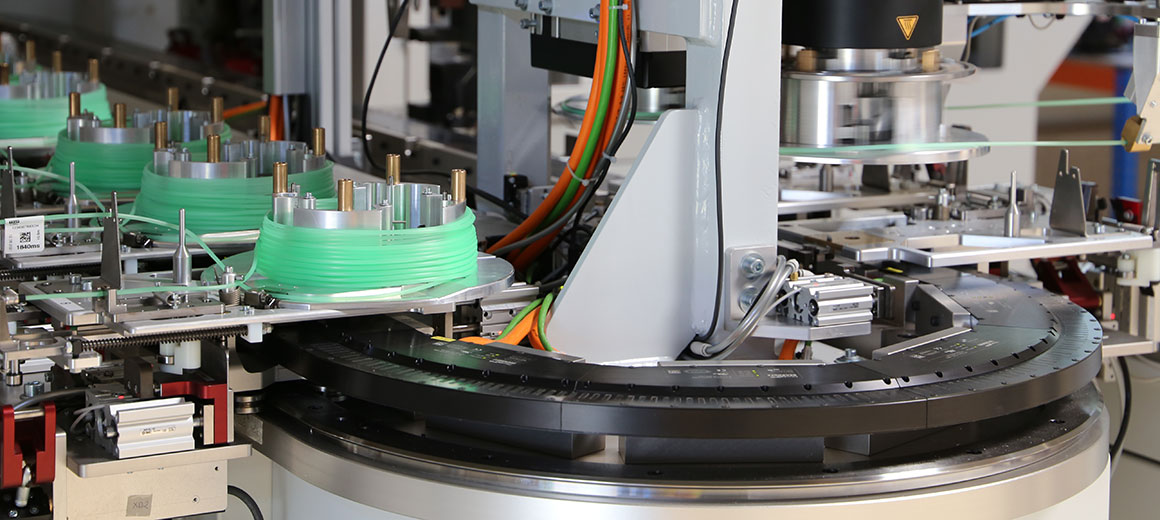
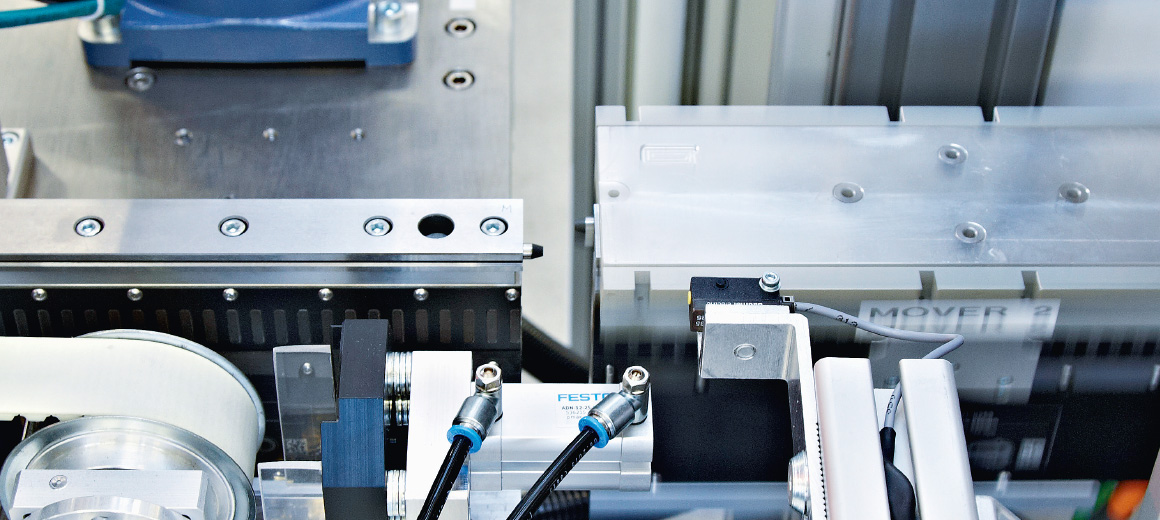
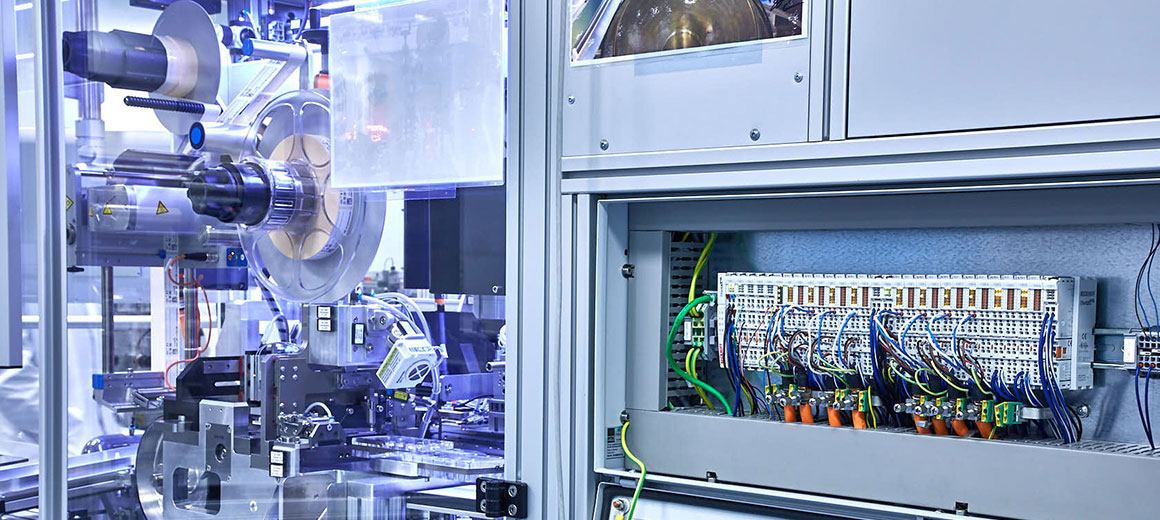
Flexible and cost-effective production of Plasma Separation Cards
Roche-Gruppe, Switzerland
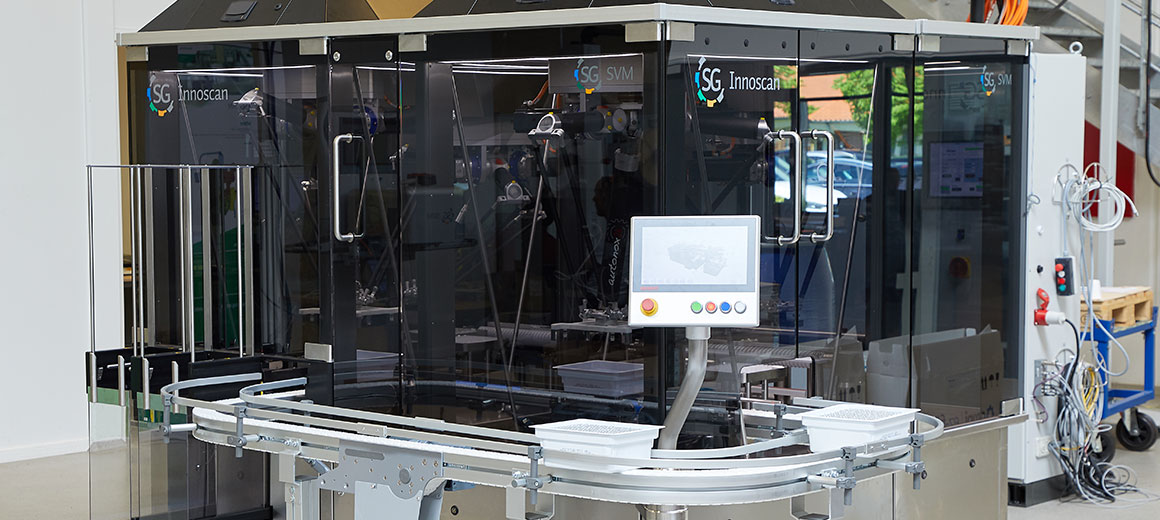
Sede centrale Svizzera
Beckhoff Automation AG




Roche-Gruppe, Switzerland

The increasing demands on machines and plants to integrate vision, energy management, or acquisition of machine data go hand-in-hand with the expectation of increased quality, performance and throughput. This pushes many previously proven solutions to their limits. In order to remain internationally competitive in the future, established concepts must be put to the test. These include, for example, the initial costs associated with the increase in the number of interfaces to various systems within an application. Modern machine-to-machine (M2M) communication and cloud connectivity are required here. Machine manufacturers must integrate production concepts based on Industrie 4.0 into their machines.
With PC-based control and EtherCAT technology, Beckhoff offers high-performance control solutions for assembly units, handling systems, test equipment and robot applications. Modular in design and precisely scalable to suit any performance requirements, the PC-based solution is suitable for controlling and monitoring the entire process chain of individual machines as well as complete production lines. As a result, all production steps – from feeding, joining, welding, gluing, assembly, and testing to material handling and robot integration – can be realized consistently with Beckhoff Industrial PCs as the hardware and TwinCAT as the software platform. Since all control functions are mapped in software, production cells or production lines can be adapted to changing requirements with little engineering effort and new functionalities can be integrated. Whether lot size 1 or mass production, the changeover can take place on the fly.
Open interfaces in hardware and software offer the machine manufacturer high degrees of freedom in plant design. They enable the integration of a variety of different devices as well as the optimal networking of machines and plants for M2M communication. As a driver of the development of open, compatible automation interfaces, Beckhoff also supports the communication standards for secure cloud connectivity with OPC UA and MQTT and offers the corresponding software tools for cloud-based communication and data analysis. Production optimization and increase, energy efficiency, condition monitoring, predictive maintenance and machine learning thus become an integral part of the machine automation.
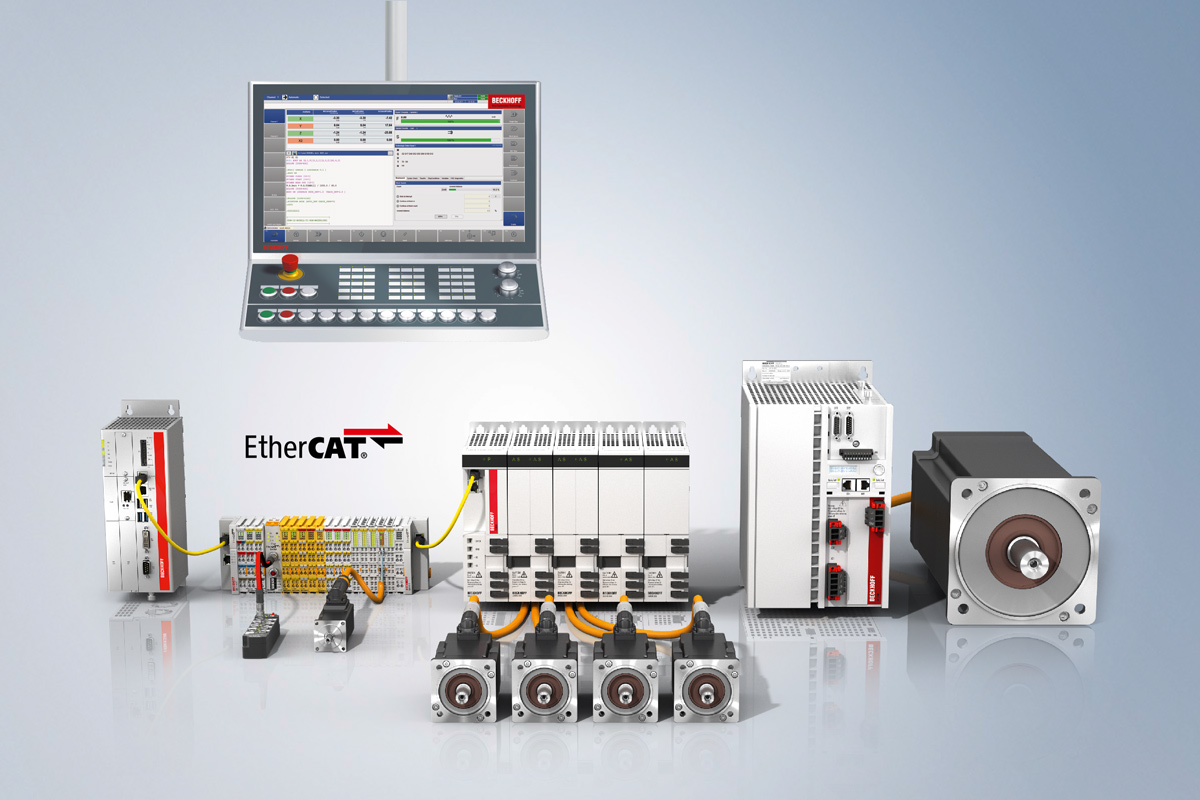
With PC-based control, Beckhoff offers comprehensive system solutions in various performance classes for all application tasks in assembly, handling and robotics. The PC-based control system consists of a powerful Industrial PC, the real-time fieldbus EtherCAT as well as the TwinCAT software for engineering and real-time control. The drive technology with motors, amplifiers and intelligent transport systems, including corresponding software modules, is an integral part of the control solution.
Modular in design and scalable with regard to performance, design and price, the Beckhoff control and drive technology can be optimally adapted to the requirements of the respective application. Based on the high performance of the multi-core and many-core processors in the Industrial PCs, the TwinCAT automation software executes all machine functions such as PLC, HMI, motion control, robotics, safety, measurement technology, and vision on a central platform. Open interfaces in hardware and software, support for all common fieldbus systems and software protocols as well as an integrated IoT connection (e.g., via OPC UA or MQTT) enable continuous communication from the field level to the cloud. Energy management in accordance with the ISO50001 standard and predictive maintenance for the quality assurance of machines and products can also be implemented simply using appropriate EtherCAT terminals and TwinCAT software modules. Cloud engineering and Gbit EtherCAT are already extending today's solutions for future requirements!
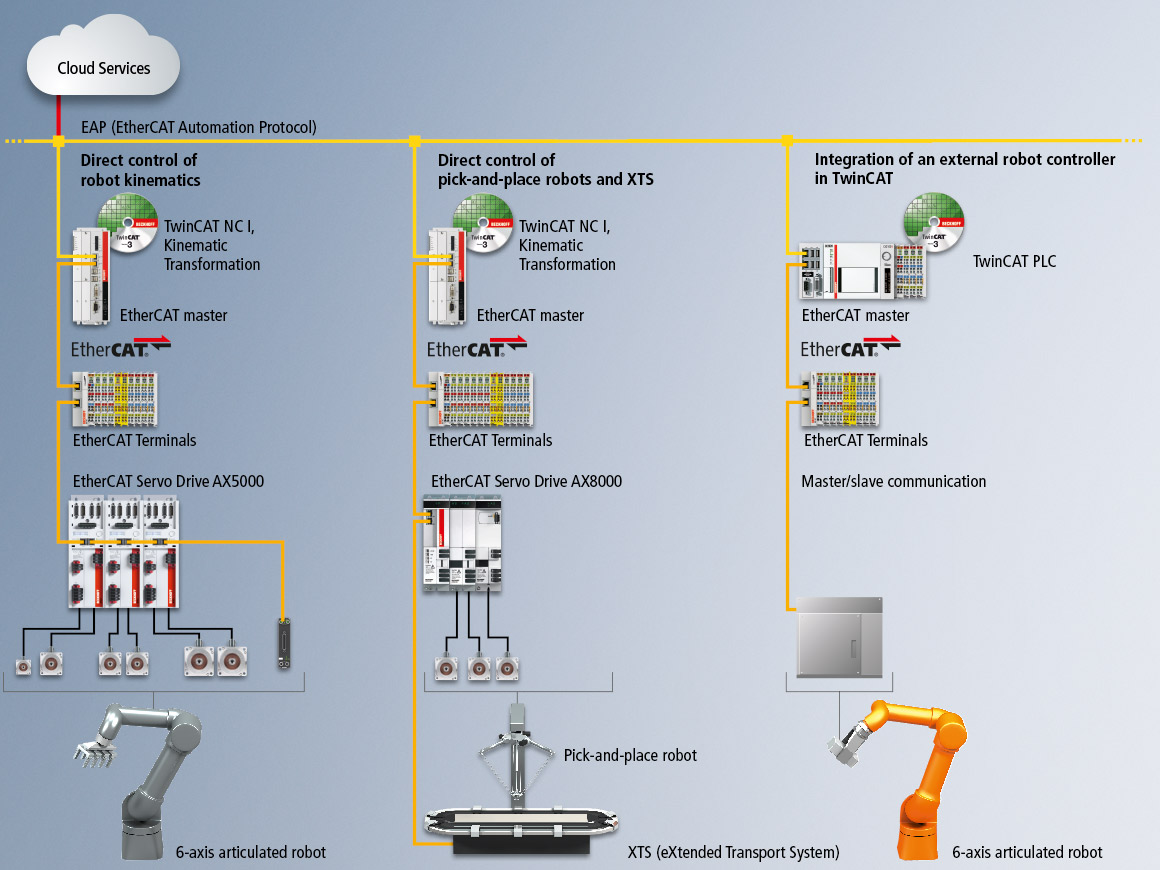
EtherCAT is the fastest industrial Ethernet technology, and in addition, it has outstanding nanosecond-level synchronization accuracy. Of course, all applications in which control or measurement tasks are performed via the fieldbus benefit from these outstanding properties. Thanks to the significantly reduced response time, the efficiency of all applications in which switching conditions occur is increased. In addition, the EtherCAT system architecture reduces the load on the controller: the CPU load is reduced by 25 to 30% compared to other bus systems with the same cycle times. Overall, the EtherCAT performance leads to higher accuracy and higher throughput and thus lower costs.
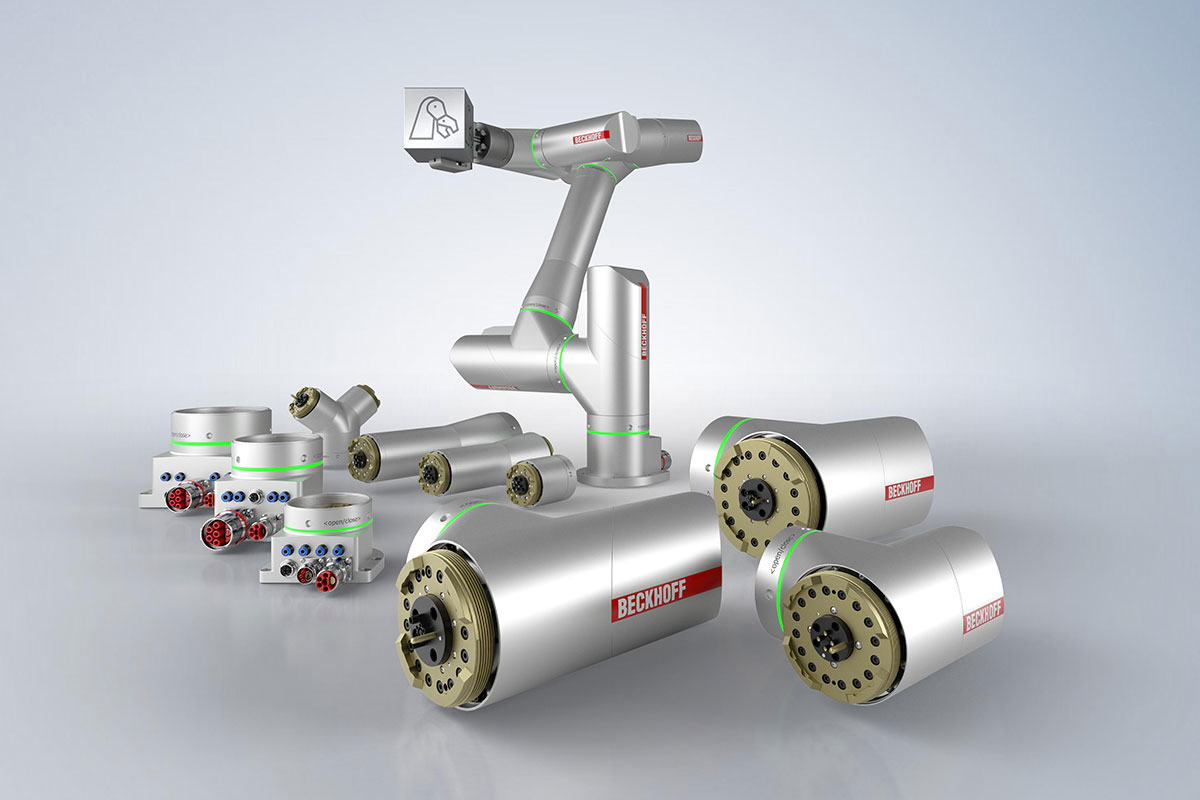
The ATRO system is a modular industrial robot system that can be used to put together robot structures for different applications in the field of assembly and handling technology on an individual and flexible basis. Standardized motor modules in various sizes, together with link modules in different designs and lengths, are assembled on a base module for cable and media feeds. This is how the machine builder creates kinematics optimized for the application.
Complete integration into the TwinCAT holistic control platform offers direct access to a wide range of proven automation functions. PC-based control hardware for machine control, robot control, safety, vision, condition monitoring, or connection to an edge device or cloud system integrates all functions. The link with XPlanar and XTS and the precise synchronization of all components into the robotics system allow completely new machine concepts.
The advantages of the ATRO system for assembly and handling technology at a glance:
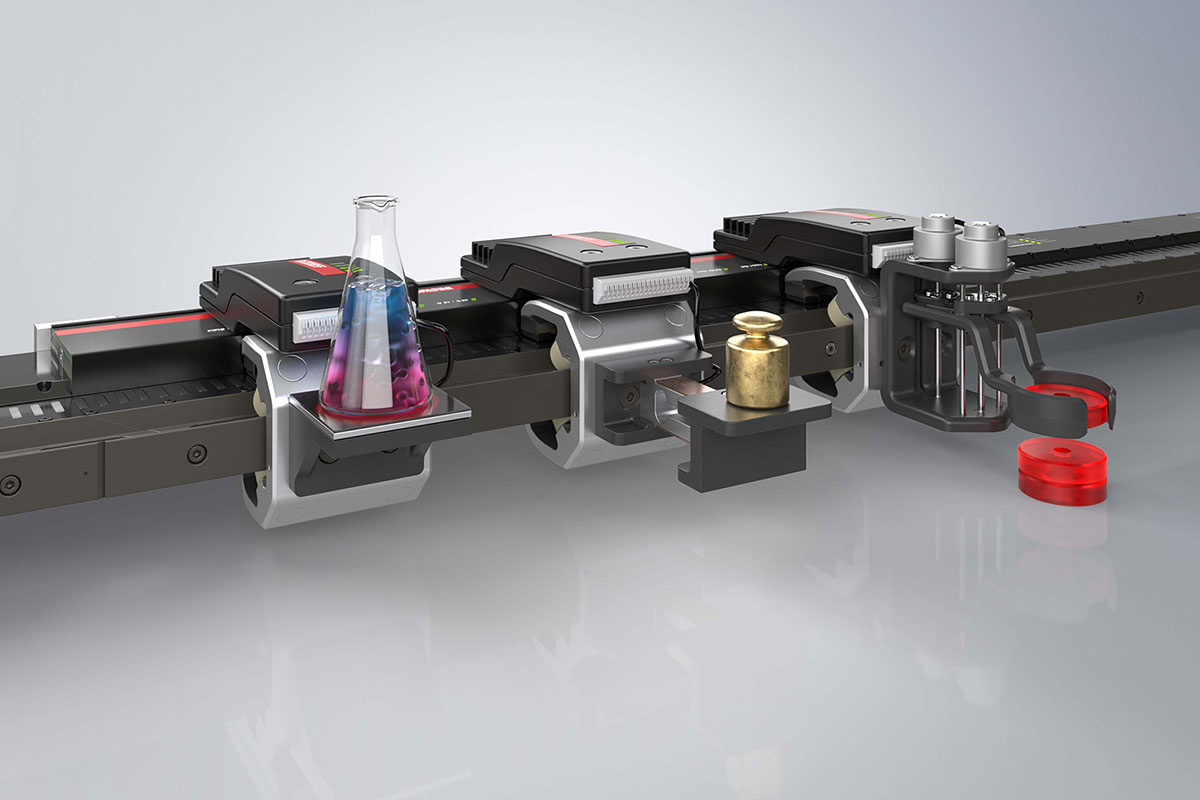
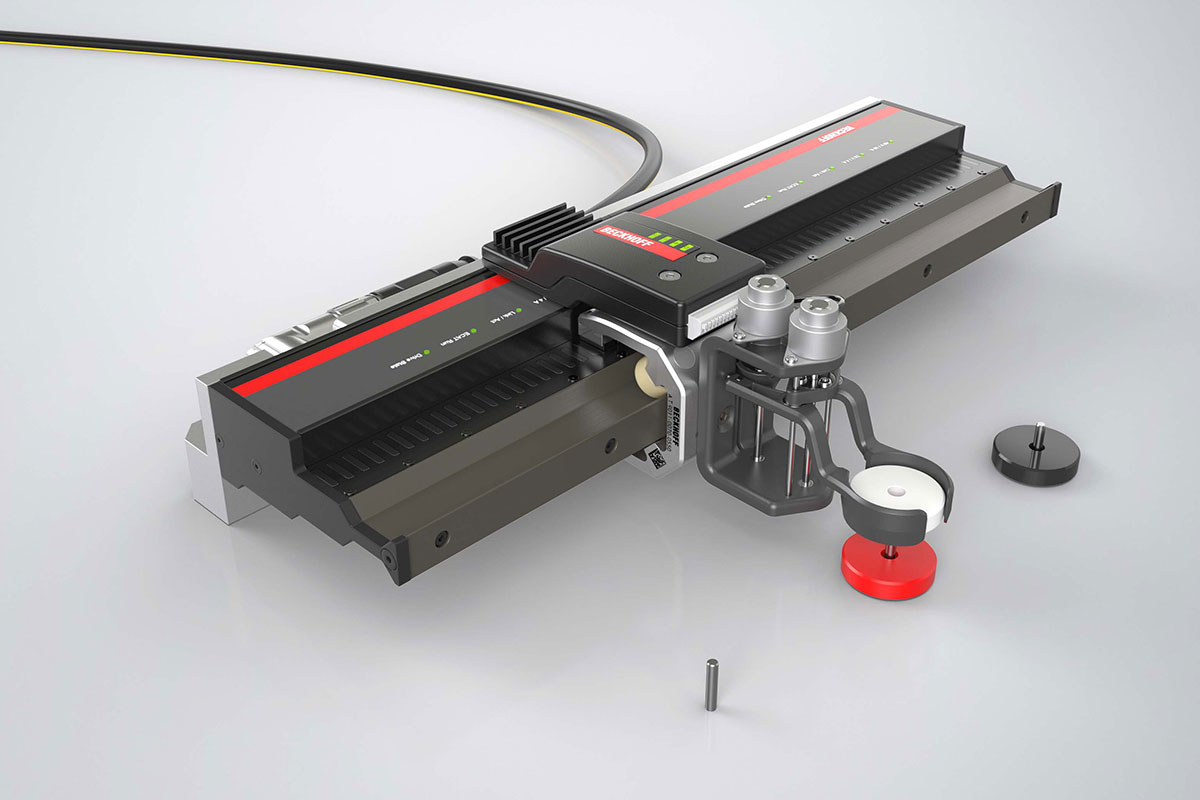
No Cable Technology (NCT) transforms the XTS from a passive transport system into an active handling system. NCT enables wireless transmission of energy and real-time data to the XTS movers, opening up further degrees of freedom in plant design and new dimensions in machine flexibility. Against the backdrop of increasing variant diversity and shorter product life cycles, NCT can help make machines as versatile as possible while reducing their footprint through pre-processing during transport. NCT can be controlled in the familiar TwinCAT environment and combined with normal XTS systems as required.
In the area of assembly and handling technology, the XTS becomes a flexible multi-robot system when combined with NCT: movers can perform multi-axis movements and thus pick up, place, transfer, align, and stack products. For example, this allows product streams to be split and merged again. In addition, products from an unsorted irregular product inflow can be picked up and then sorted or placed directly in the final packaging.
Movers can also become mobile processing stations: products can be heated, aligned, or rotated directly on the mover – to enable 360° detection by a camera, for example. With the aid of appropriate sensor technology, measured variables such as presence status or weight can also be recorded on the mover. This means that measurement tasks can be carried out not only during the ongoing production process, but also in parallel to the machining station or during the transport movement. Times for infeeding and unloading at alternative process stations are eliminated, which shortens overall production time and significantly increases machine efficiency.
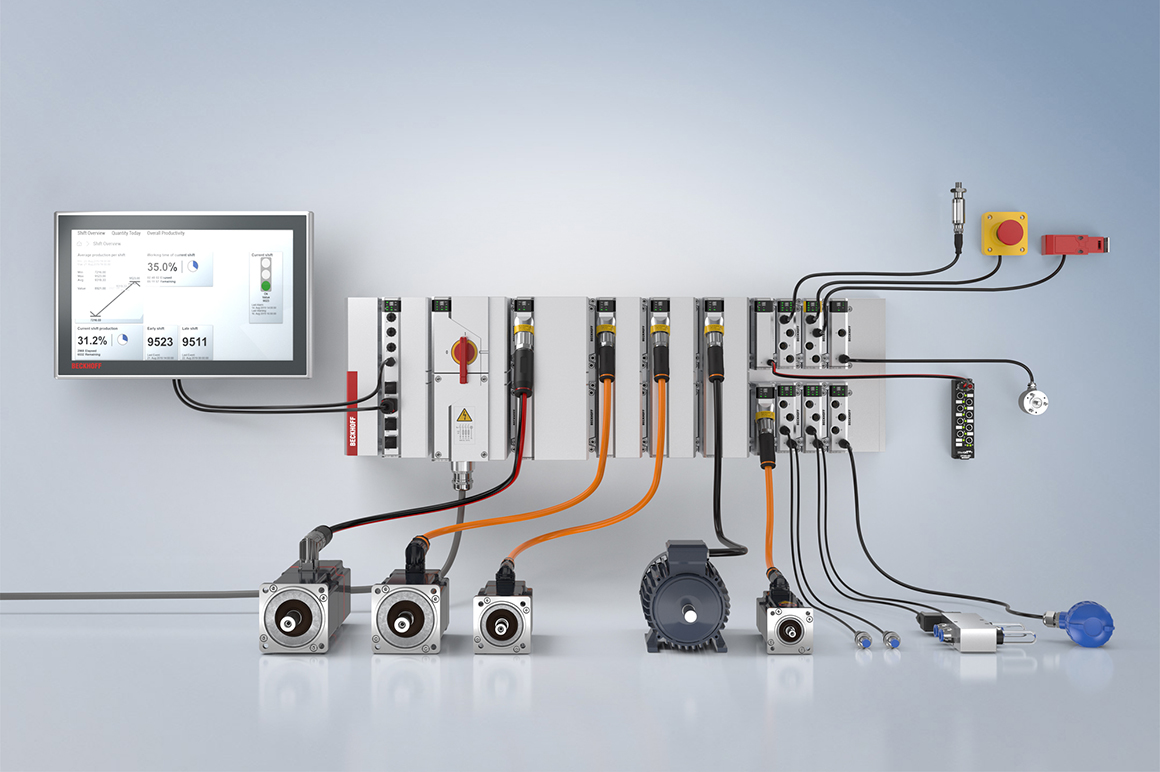
For the first time, the MX-System enables completely control cabinet-free automation solutions in machine and system engineering. The combination of baseplate and function modules resulting from the modular system combines all the tasks and features of a control cabinet: power supply, fuse protection and distribution, generation and monitoring of auxiliary voltages, sequence control with inputs and outputs, control of motors and actuators, and the connection level for the field devices. The full system integration of all machine functionalities is achieved via freely selectable IPC, coupler, I/O, drive, relay, and system modules, which can be configured and combined according to the specific application.
The consistently systemic approach of comprehensively coordinated assemblies, certified to international standards, enormously reduces the effort required for planning, assembly, machine installation, and maintenance. Since considerably fewer components are required than in traditional control cabinet design to implement the same requirements, the entire MX-System is significantly more compact than previous solutions. The system footprint is reduced, and system availability and flexibility are also increased. In each life cycle phase of a control system, the MX-System offers significant advantages over the classic control cabinet.
The advantages of the MX-System for assembly and handling technology at a glance:
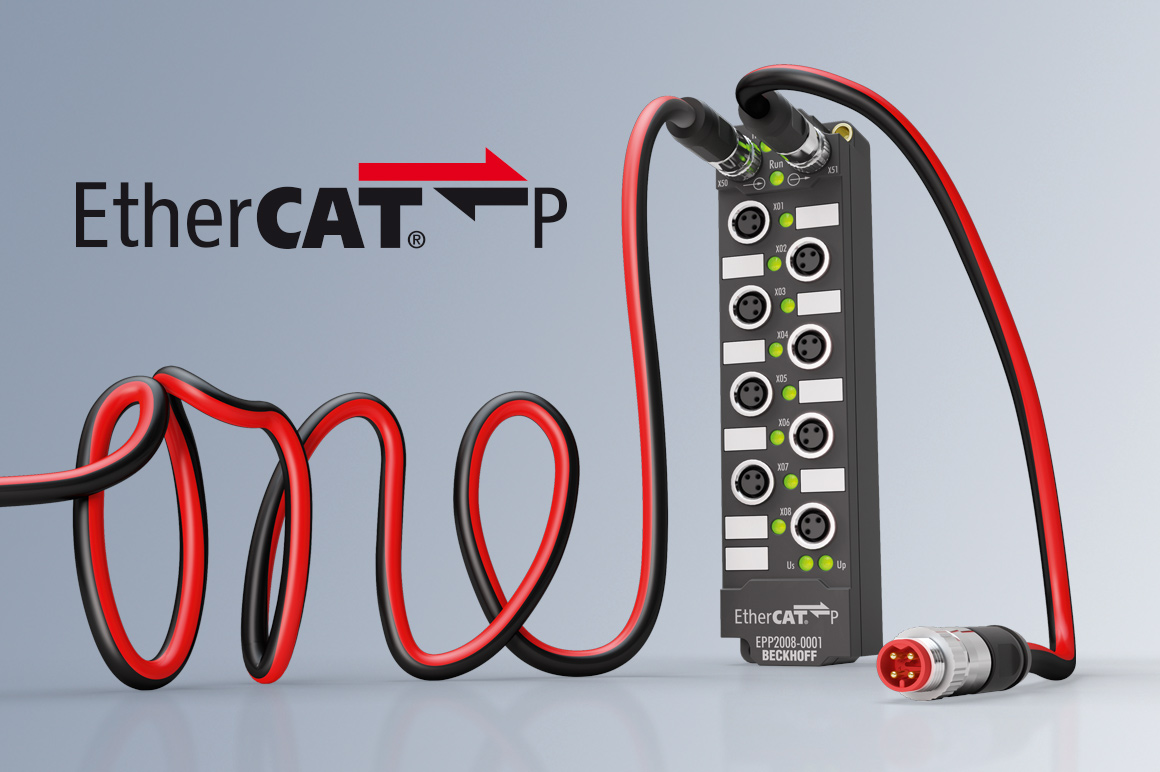
Less wiring means less effort, lower costs, fewer sources of error – and, overall, more satisfied customers! With the development of the One Cable Technology, which combines power and feedback line in one cable, Beckhoff has created an optimal solution here. For example, fewer cables need to be pulled through an energy chain, saving time and money. Due to the elimination of the feedback line for motors, the mounting space on the machine and in the control cabinet is reduced and thus makes an important contribution to a machine design with a smaller footprint.
The One Cable Technology, for example for connecting motors, is a standard that has been shaped by Beckhoff for years and halves material and commissioning costs. As a further development, Beckhoff has launched EtherCAT P, the one cable technology for the field level. EtherCAT P combines EtherCAT communication with the power supply for the connected consumers on a standard four-wire Ethernet. In addition, EtherCAT P enables the direct forwarding of a power supply via the devices. All advantages of EtherCAT, like the free choice of topology, are preserved. One Cable Automation simplifies the system cabling in machine manufacturing, as components, terminal boxes and machine modules only need to be connected via a single hybrid cable.
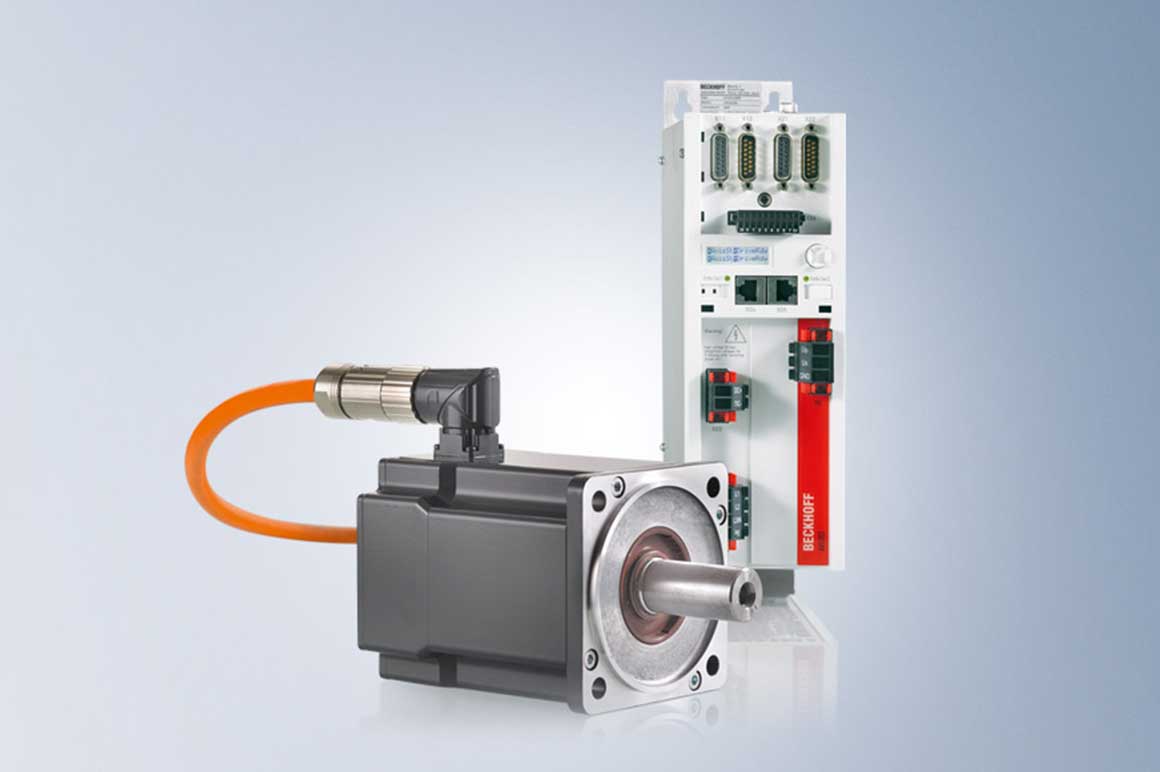
The Beckhoff servomotors with One Cable Technology have lastingly revolutionized the servo market, as only one connection cable is required for motor current and encoder feedback. The AX8000 multi-axis servo system supports OCT. In combination with the servomotors from the AM8000 (standard), AM8500 (increased inertia), AM8700 (anodized surface) and AM8800 (stainless steel) series, the cabling is reduced to the obligatory motor cable, through which the feedback signals are then also transmitted. As with sensorless control, the use of an additionally required feedback line is eliminated. All the information required for control purposes is transferred reliably and fail-safe via a digital interface.
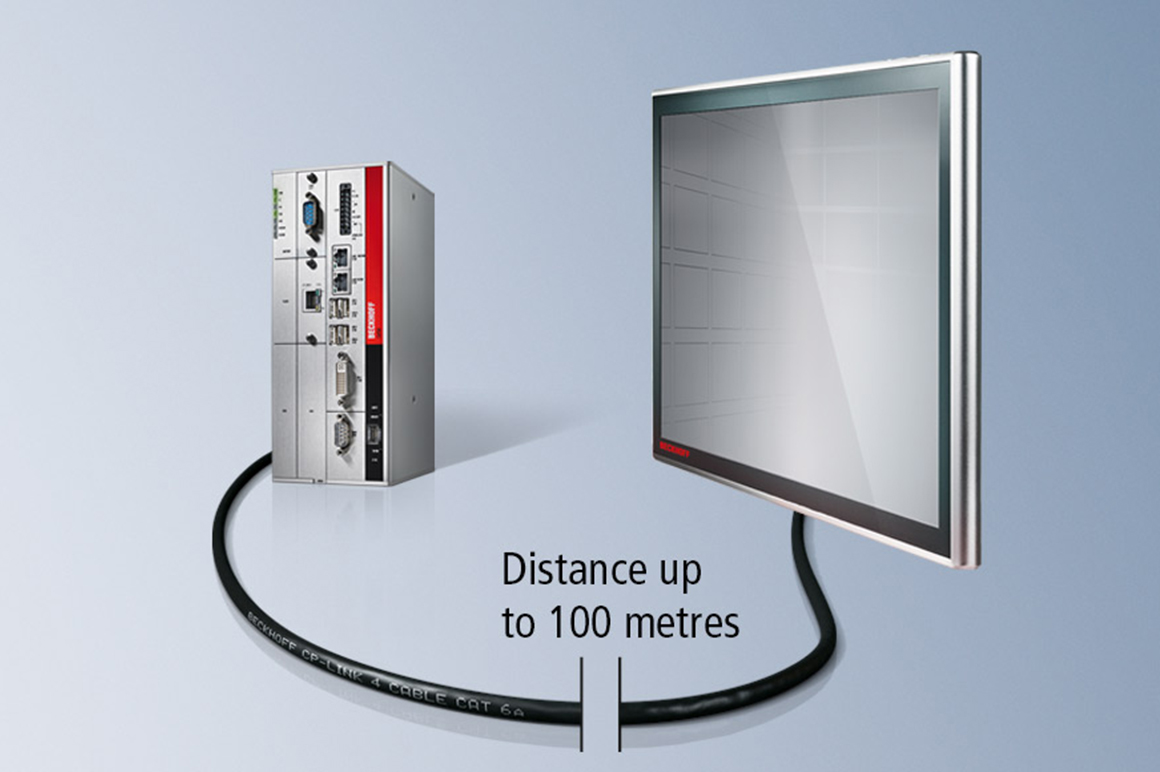
With CP-Link 4, the distance between Control Panel and Industrial PC can extend up to 100 m. Using the one-cable solution, video signals, USB 2.0 and power supply are transmitted via a standard CAT.6A cable. Cable and installation costs are thus reduced. A further benefit is the use of purely passive displays. The CP-Link 4 technology is supported by the new Beckhoff multi-touch Panel series CP29xx-0010 (built-in version) and CP39xx-0010 (mounting arm version).
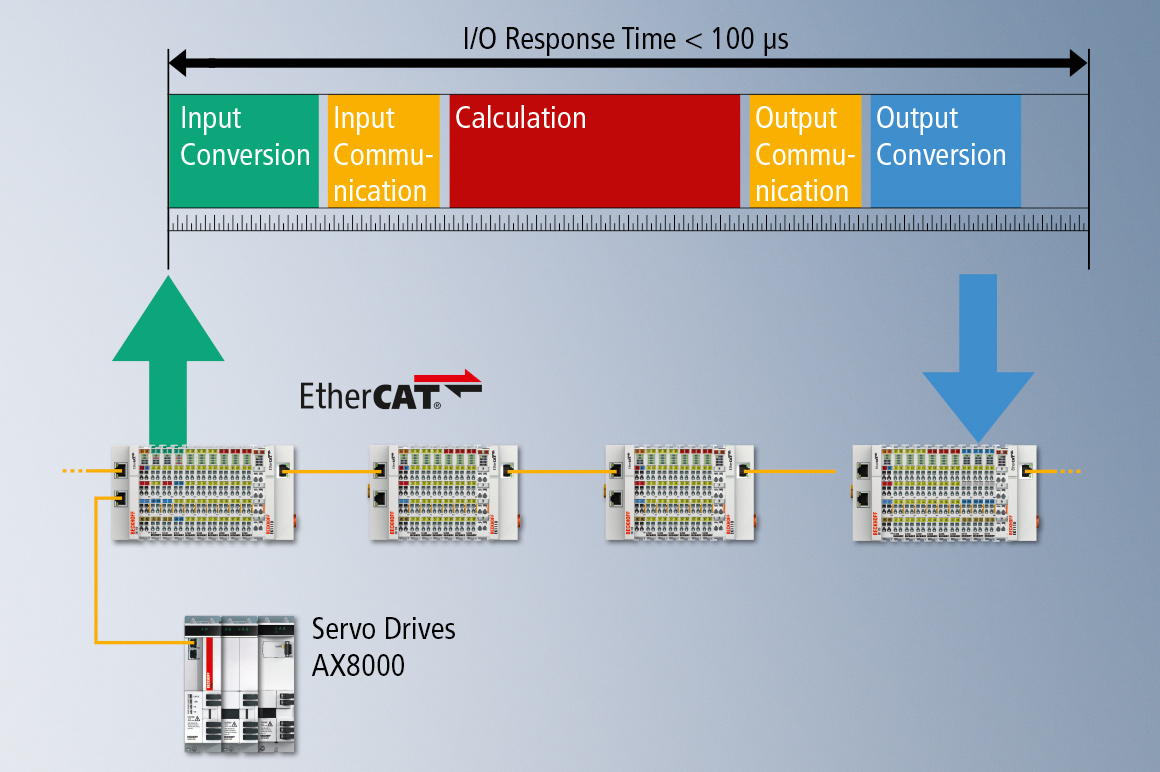
With XFC Technology (eXtreme Fast Control Technology) Beckhoff presents a new, fast control solution. XFC is based on an optimized control and communication architecture comprising an advanced Industrial PC, ultra-fast I/O terminals with extended real-time characteristics, the EtherCAT high-speed Ethernet system and the TwinCAT automation software. With XFC it is possible to realize I/O response times < 100 µs. This technology opens up new process optimization options that were not possible in the past due to technical limitations.
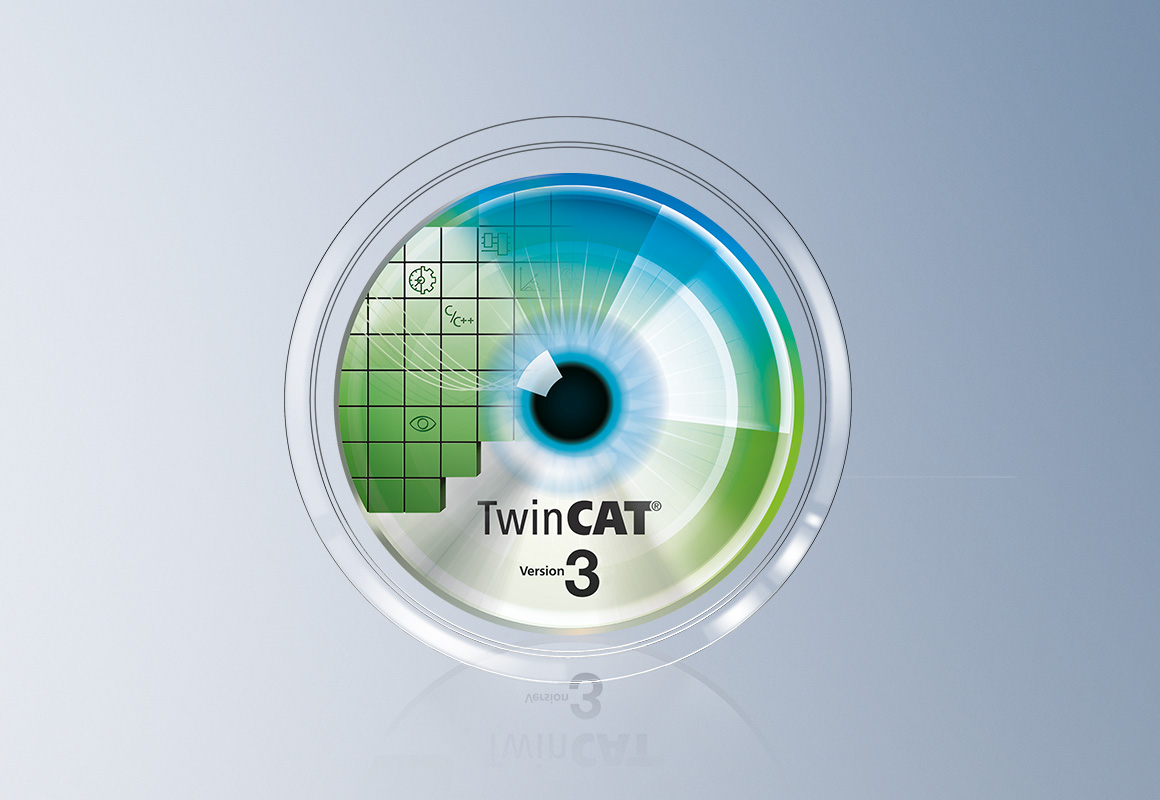
As a specialist in PC-based control, Beckhoff supplements the TwinCAT world, which has been successful for many years, by integrated image processing with TwinCAT Vision. Image processing is gaining more and more importance and is increasingly becoming the decisive quality criterion for machine manufacturers and their customers: for Industrie 4.0 applications, for quality optimization or for track-and-trace functions.
The approach of PC-based control technology offers the ideal solution here: In addition to PLC, motion control, robotics, high-end measurement technology, IoT and HMI, TwinCAT Vision now also integrates image processing on a uniform control platform. This makes engineering much simpler as the configuration or programming takes place in the familiar environment. Furthermore, it is now possible to synchronize all image-derived control functions in real time. Latencies are eliminated, and all image algorithms are executed in real time. This shows the enormous quality advantage over conventional vision solutions: with TwinCAT Vision, machine manufacturers can integrate all image processing tasks directly into the master controller. The result is modern machine concepts that meet future market requirements and increase the competitiveness and investment security of one's own products.
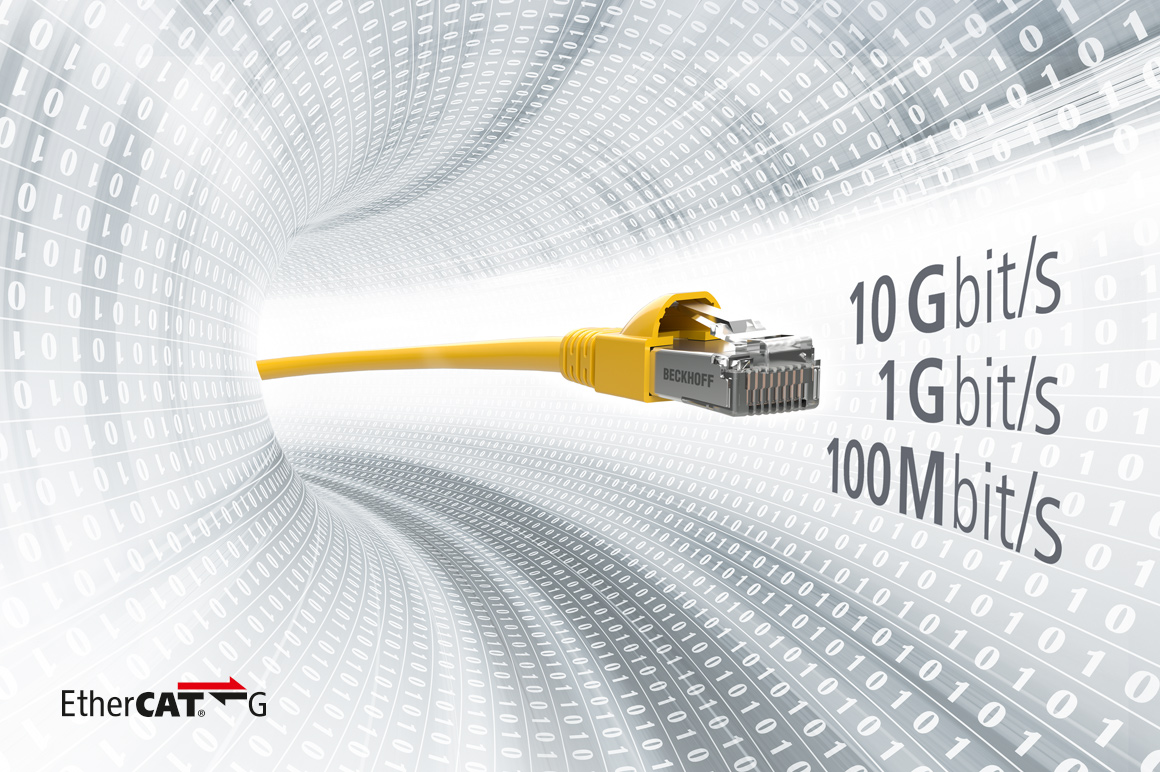
EtherCAT G builds on the principles of the successful EtherCAT technology but moves the available data rates up to 1 Gbit/s and 10 Gbit/s. The EtherCAT protocol itself remains unchanged. As before, all of the devices on a network receive the telegrams sent by the EtherCAT master. Each EtherCAT slave still reads the data addressed to it "on the fly" and inserts its own data into the frame as the frame moves downstream; now, though,this is possible at a speed of 1 Gbit/s or 10 Gbit/s. Hardware propagation times are the only factor delaying telegram processing. The last device in a segmentor stub line identifies an open port and utilizes the full duplex feature of Ethernet network physics to send the telegram back to the master.
EtherCAT G and EtherCAT G10 also retain all other capabilities of EtherCAT. Devices with three or four ports (junctions) enable users to flexibly configure network topologies that suit the exact requirements of their machine architecture. Optional machine modules can still be plugged and unplugged via the Hot Connect feature. Network-wide diagnostics are available to help minimize machine downtime and increase availability. And the built-in system of distributed clocks still ensures devices are synchronized precisely in less than 100 ns.
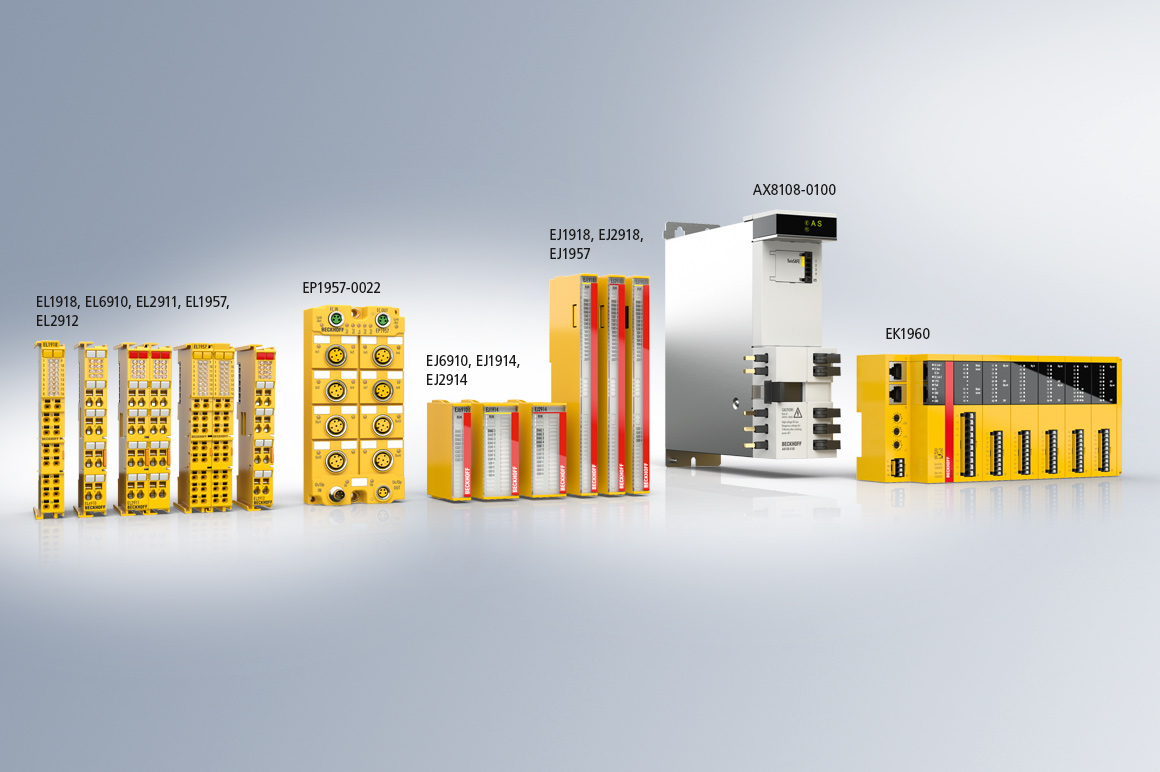
With TwinSAFE, we provide a safety solution that is scalable in software and hardware for the safety requirements in the entire machine automation. Due to their modularity and versatility, the TwinSAFE components fit seamlessly into the Beckhoff control system. The I/O components are available in Bus Terminal, EtherCAT Terminal, EtherCAT plug-in module and EtherCAT Box Module form factors and can be used for applications up to SIL 3 according to EN 61508:2010 and Cat 4, PLe according to EN ISO 13849-1:2016-06. In the field of drive technology, too, solutions without safety functionality are hardly conceivable anymore. Beckhoff therefore started integrating TwinSAFE motion functions into its drive systems at an early stage – in both standard and compact drive technology. The possibility to transmit the safety-relevant signals over a standard bus system gives rise to substantial advantages in terms of planning, installation, operation, maintenance, diagnostics and costs. The safety application is configured or programmed in the TwinCAT software and then transferred via the fieldbus to a TwinSAFE logic component. It forms the core of the TwinSAFE system. All safety devices in the system communicate with the logic component.
The TwinSAFE SC technology enables the use of standard signals for safety tasks in any networks of fieldbuses. To do this, EtherCAT I/Os from the areas of analog input, angle/displacement measurement or communication are extended by the TwinSAFE SC function. The typical signal characteristics and standard functionalities of the I/O components are retained.
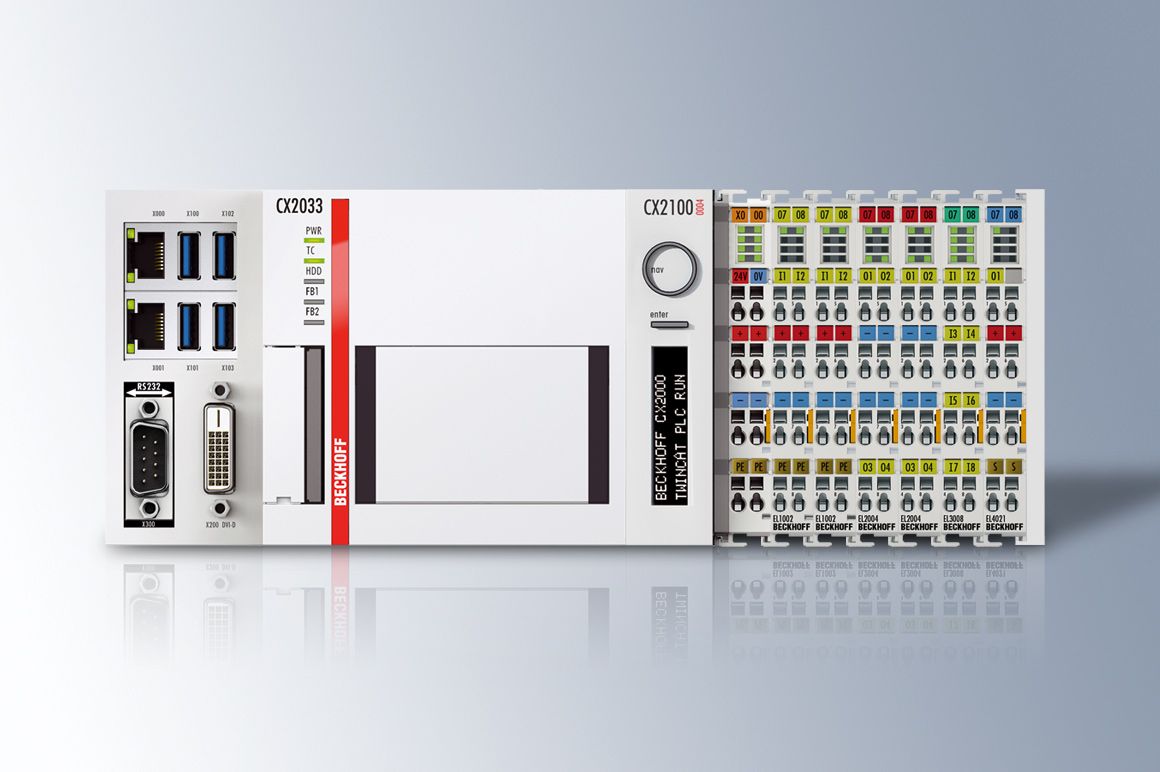
With the Embedded PCs from the CX series, Beckhoff combines PC technology with the modular I/O level to generate a space-saving industrial controller on the DIN rail. Scalable in performance, the embedded controllers are suitable for control tasks in all performance ranges. As standard, terminals from the extensive Beckhoff I/O range can be directly connected to the right-hand side of each Embedded PC and assembled according to the task. The terminals are simply plugged into the Embedded PC; the contact is established by clicking into place, with no further action. The direct connection of the I/O level eliminates the costs of additional couplers and reduces the wiring work. Due to their compact design, the embedded controllers help to make control cabinets and terminal boxes smaller and more cost-effective.
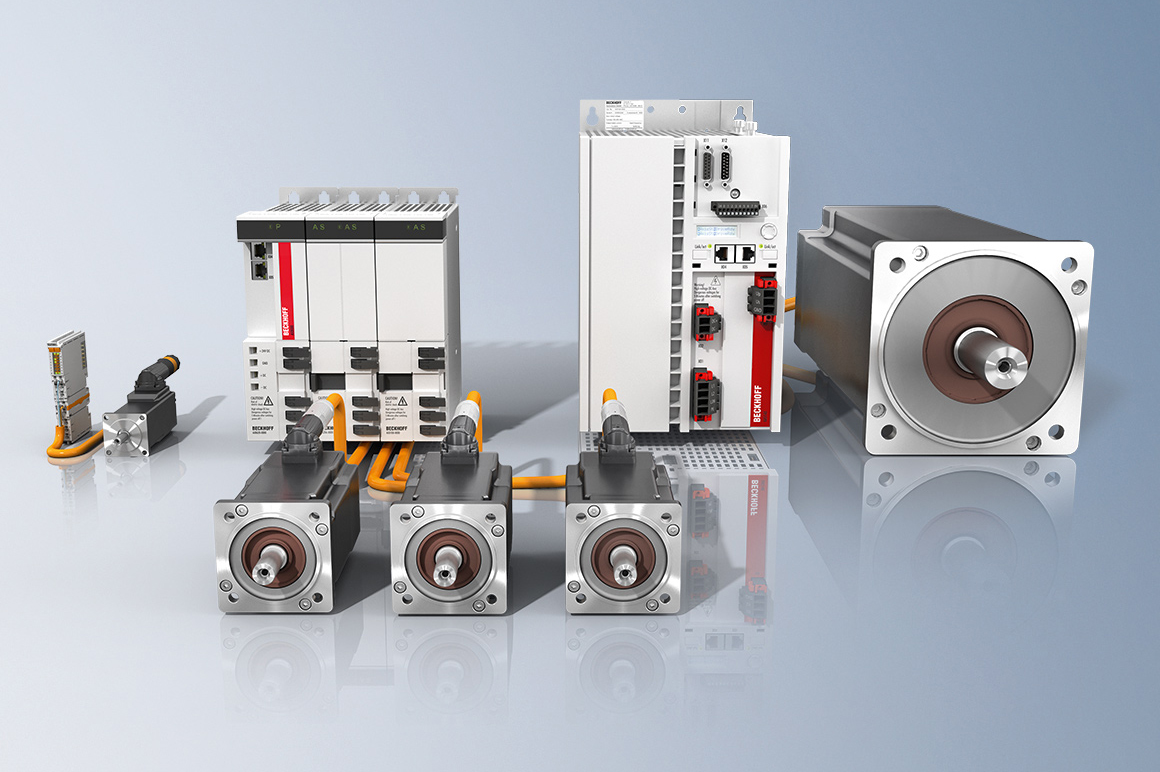
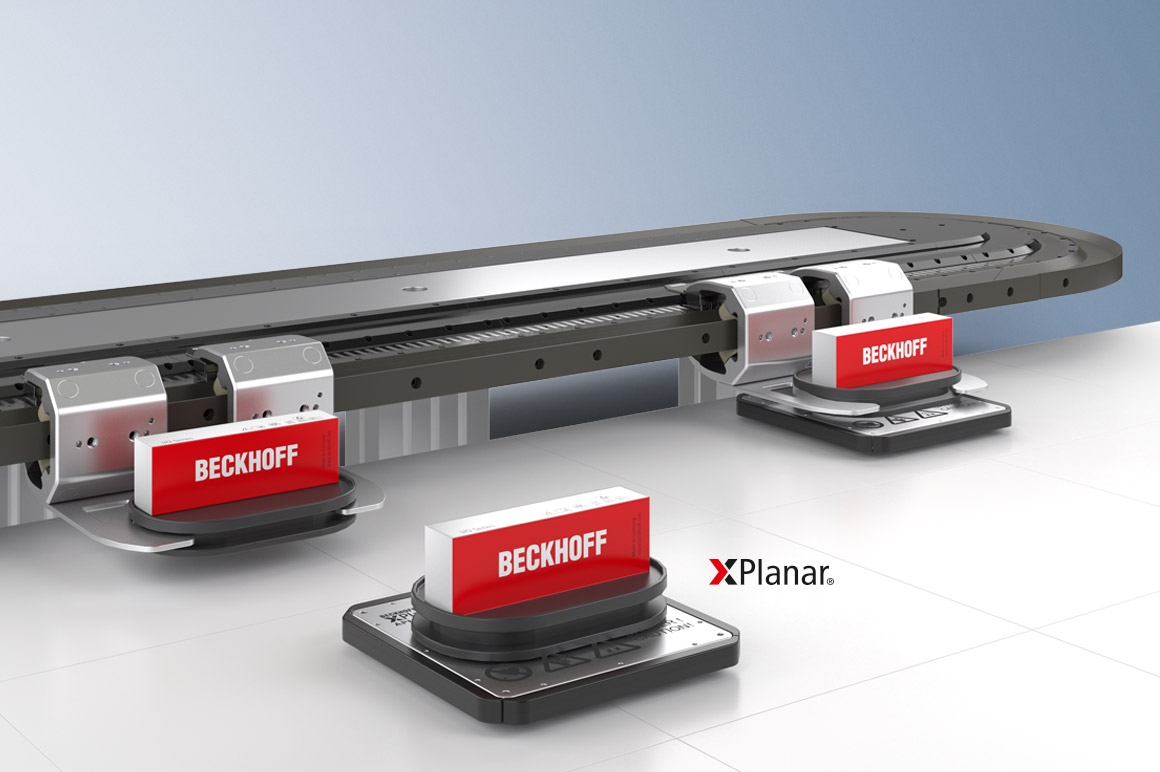
The drive requirements in production machines and in the field of robot cells have developed rapidly in recent years. Whereas a hand wheel or a pneumatics were used in the past, for example for format changes or small positioning tasks, these solutions are too inflexible for today's production operation, or the pneumatic axis is too expensive. Stepper motors or servo drives are increasingly taking their place. Depending on the application, different demands are placed on the drive technology of the machine - the only constant is the need for high precision and speed.
Our scalable drive solutions cover a broad range of applications: from DC or stepper motors to compact servomotor terminals through to the high-performance servo amplifiers in the AX series. Precisely scalable in design and performance, they enable the implementation of optimized drive concepts for rotary applications. The XTS linear transport system and the XPlanar eXtended planar motor system set new standards in drive technology and open the door to completely new application scenarios. The outstanding performance of EtherCAT enables the ideal connection to the PC-based control technology and supports the connection to other communication systems. The TwinCAT motion function blocks make it easy to realize kinematics and positioning tasks.
In robotic applications and handling machines, a variety of axes must be moved individually or positioned with respect to each other and moved in a highly dynamic manner. The integrated, fast control technology of the AX5000 servo drive series and the AX8000 multi-axis servo system is ideal for this purpose. The flexible concept with 1 or 2-channel axis modules as well as the variable motor power distribution offer a cost-optimized solution for a wide variety of drive technology applications. The One Cable Technology of the AM8000 servomotor series, which combines power and sensor cables into one standard motor cable, reduces cabling work and commissioning costs. Due to the integrated safety technology, Beckhoff's drive portfolio meets the high requirements for machine safety and facilitates controller configuration in the different applications.
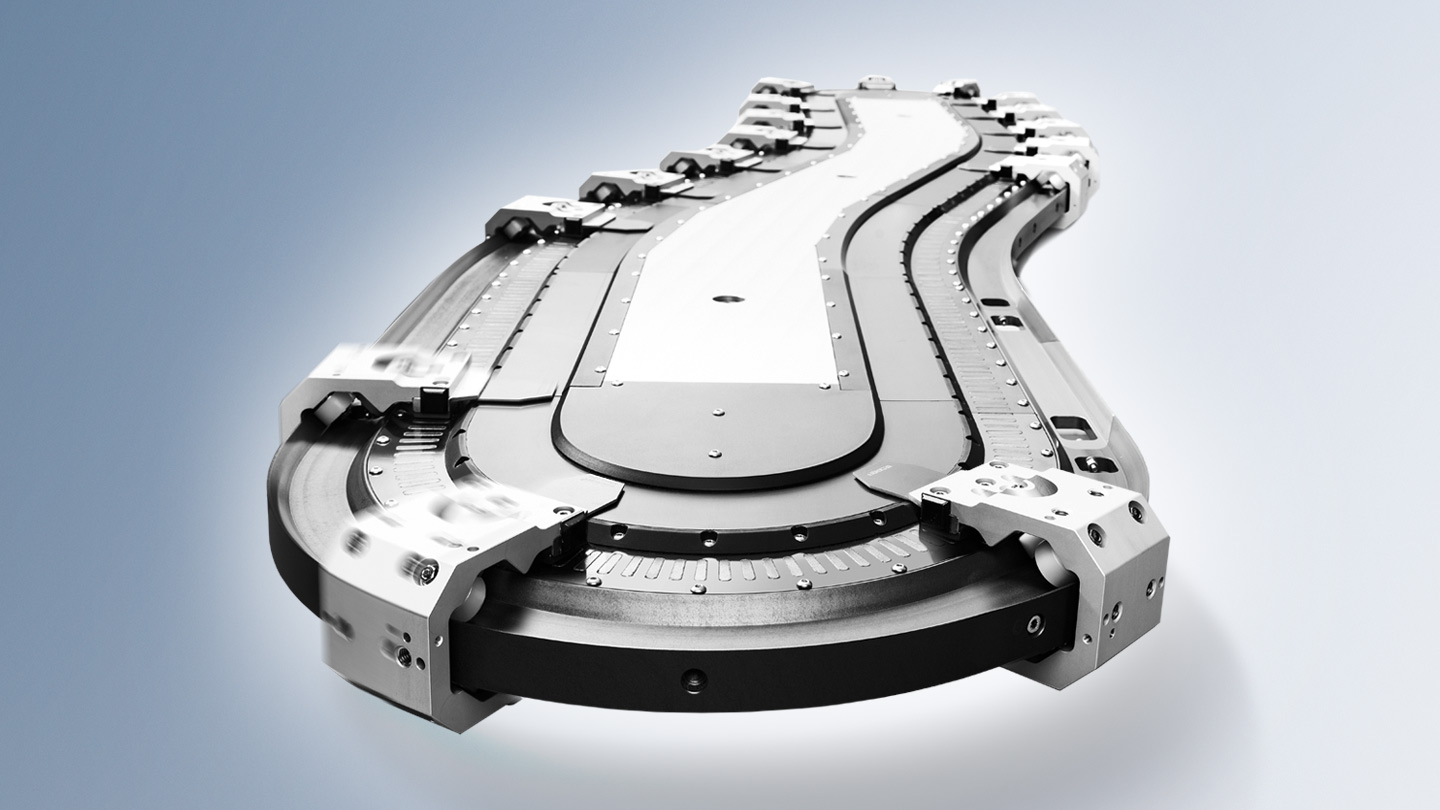
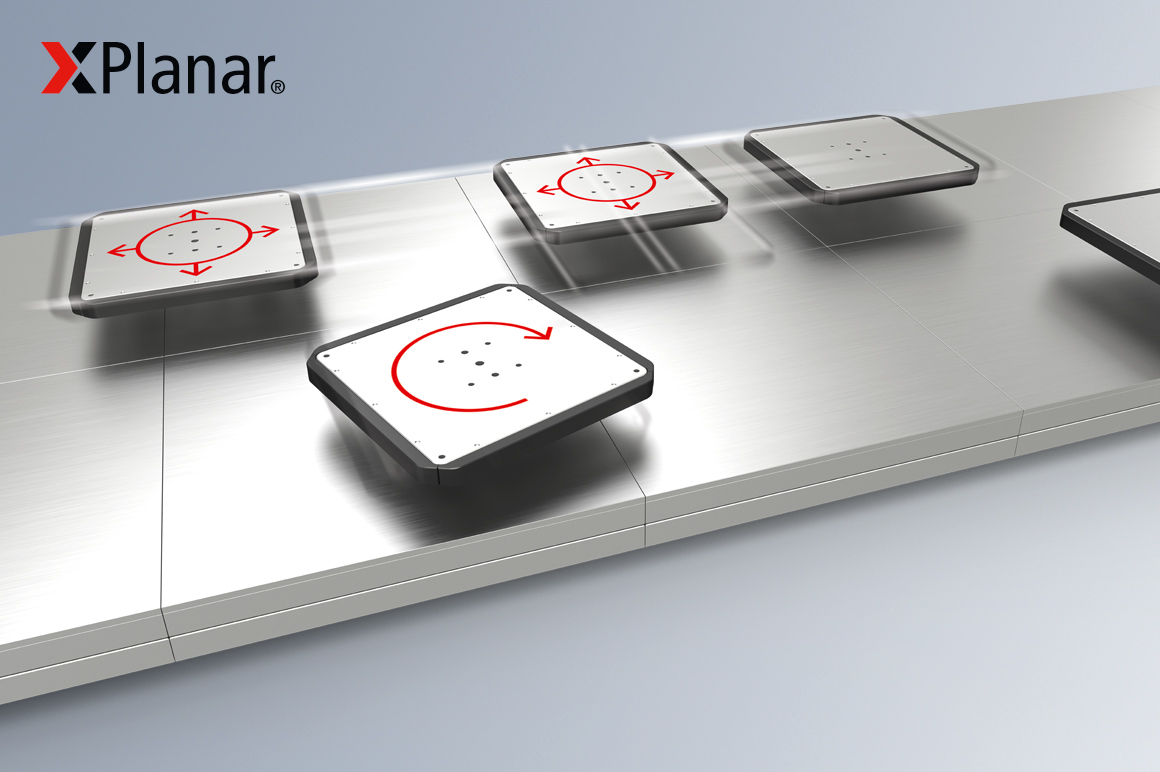
With the XTS linear transport system, Beckhoff offers a reliable drive solution in which magnetically driven movers move along a travel path of fully integrated motor modules. An Industrial PC with the TwinCAT automation software enables the independent control of the movers with individual motion profiles. This results in many system-related benefits. The transport system is ready for operation immediately after assembly, as power electronics and displacement measurement are included in the XTS motor modules and the movers are completely passive. Due to different geometries of the motor modules, both an open and a closed travel path can be created and the machine footprint can be reduced by individual track layouts. The XTS not only replaces conventional conveyor belts, but also enables an innovative design of the entire machine. With the flexible motion profiles, simple to highly complex processes can be realized and the entire manufacturing process can thus be optimized.
The XPlanar eXtended planar motor system combines many advantages of conventional transport technologies in one system and adds a floating effect to product transport. This results in a wide range of new options for handling products within a machine and also between several machines. Similar to automated guided vehicle systems, the user benefits from the freedom of movement of the object carriers: Individual goods can be transported to any location via any route. XPlanar combines this flexibility with the dynamics of conventional linear motors and offers added value through cycle-time-optimized linking of individual production steps. XPlanar significantly simplifies individual production steps, because the degrees of freedom and accuracy familiar from robotics can also be used here for product transport. The concept of product positioning during processing is applied to the transport system. The floating effect replaces all mechanical guide components and drastically reduces cleaning and maintenance costs.
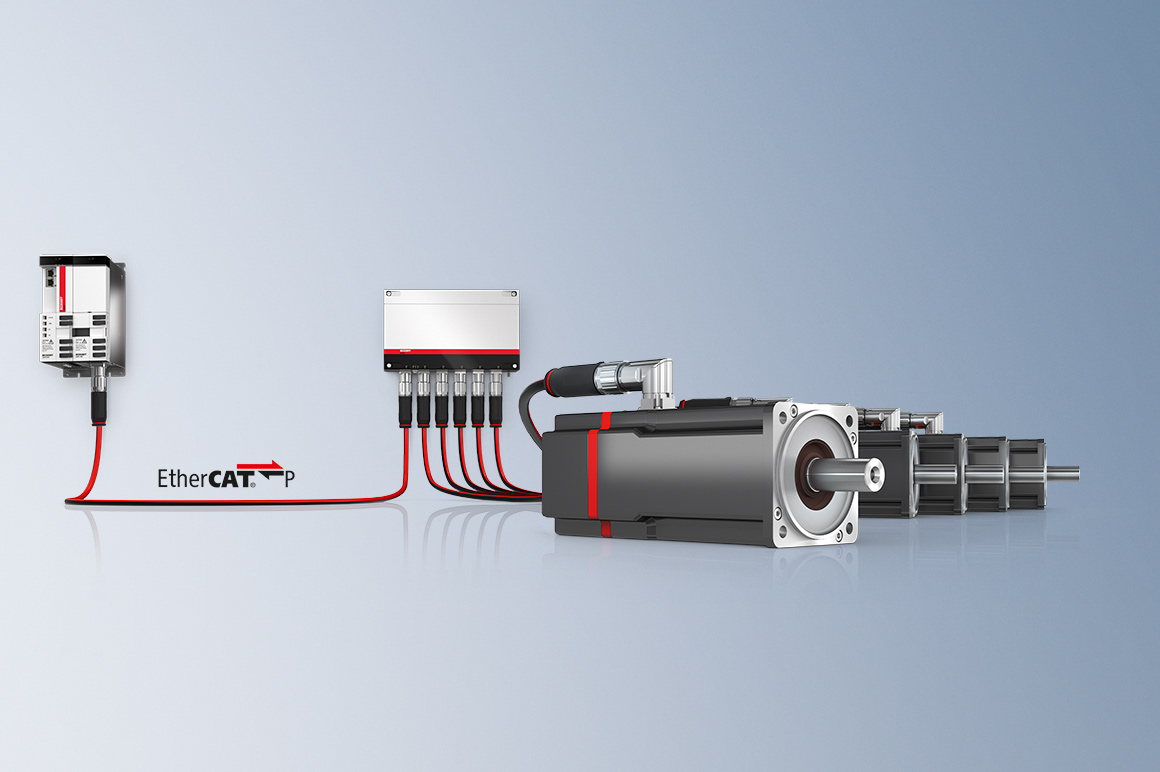
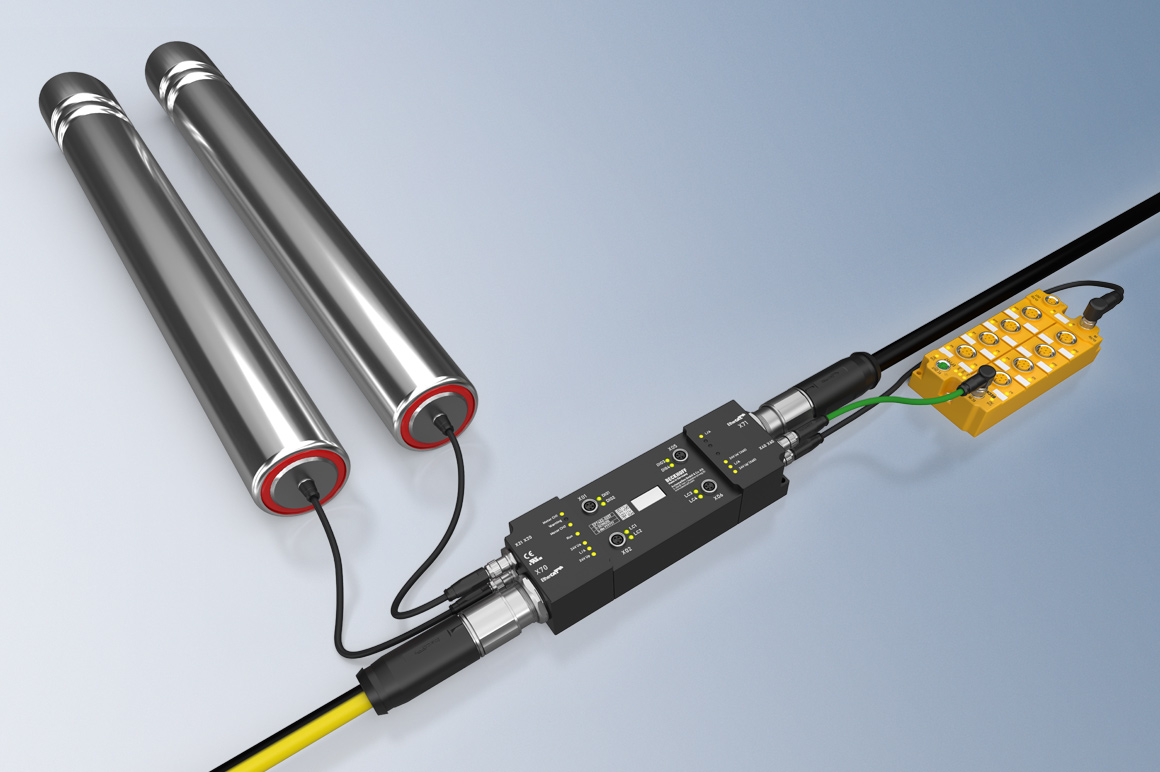
The AMP8000 distributed servo drive system integrates the servo drive in a compact form into the servomotor. By relocating the power electronics directly to the machine, the space requirement in the control cabinet is reduced to a single coupling module (AX8830), which supplies several servo drives with just one cable via a distribution module (AMP8800). This reduces the footprint of the plant and opens up new possibilities for the realization of modular machine concepts. Material costs, mounting and time expenditure are reduced and the error rate during the installation is minimized. By omission of the power feed, it is possible to make sensors and actuators smaller, and the mounting space required in drag chains, control cabinets and in the machine itself is reduced. A further expansion stage on the way to a machine without a control cabinet is achieved by the use of the AMP8620 power supply module. The connection to the control cabinet is completely eliminated here.
The EP7402 EtherCAT Box offers two outputs with an integrated controller for the direct connection of 24 V DC roller motors or other BLDC motors and takes over the complete control, independently of the manufacturer of the conveyor or the motor.

TwinCAT is the integrated platform for engineering, control, measurement technology, vision, diagnostics and analytics functions such as machine learning. Support for all common fieldbus systems and software protocols enables continuous communication from the IT system to the field level. Suitable programming languages are available for every task with IEC 61131-3, C/C++ and an open interface to MATLAB®/Simulink®. Numerous PLC libraries with function blocks according to the PLCopen Motion Control standard facilitate programming. The multi- and many-core capability of TwinCAT 3 leads to a considerable increase in performance: For example, extensive data analysis, image processing and robotics applications can be executed in the central control system without impacting performance.
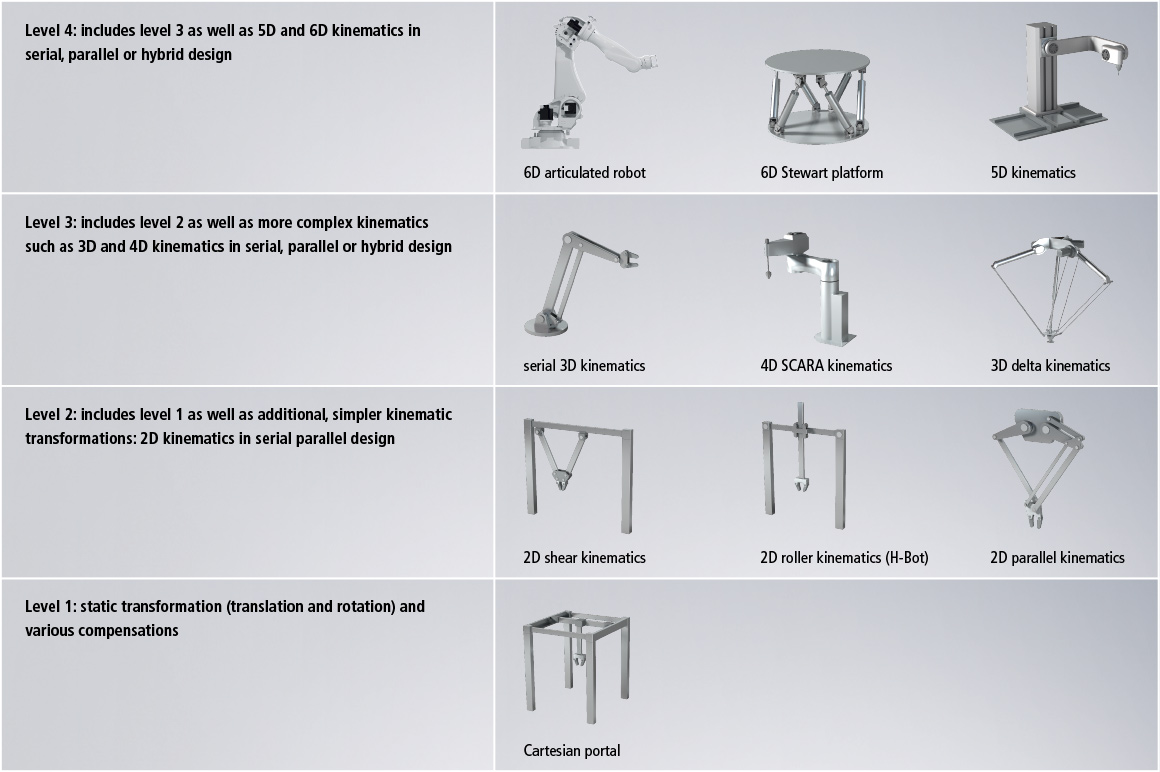
TwinCAT Kinematic Transformation integrates the entire robot control functionality into the automation software, so that PLC, motion control and robotics are executed on a single Industrial PC. In addition to the cartesian gantry, serial and parallel 2D kinematics as well as 3D delta kinematics, 6-axis kinematics and others are also available. The required kinematics can be selected and parameterized conveniently in the TwinCAT Engineering (XAE). The kinematic channel is used to specify the type (e.g., delta or SCARA) and the respepctive features (bar lengths and offsets). Values for mass and mass inertia can be specified for dynamic pre-control. In addition, tracking functions can be implemented for which preassembled components are available. This means that the robot is synchronized with a moving object, so that it can pick up workpieces from conveyor belts or inclined turntables, for example.
Using TwinCAT Kinematic Transformation, various parallel and serial kinematics, such as those used for pick-and-place tasks, can be realized effortlessly. The seamless integration of robot kinematics into the control system allows not only an additional robot CPU to be dispensed with, but also provides for optimum interaction and synchronization with the PLC and existing motion control functions. In conjunction with TwinCAT 3 Motion Pick-and-Place (TF5420), coordinated algorithms are used to achieve short cycles. Since everything runs on one controller, the communication overhead between separate systems is replaced by seamless interfaces. This results in much higher performance and improved system accuracy. The software functionality of TwinCAT, combined with our Industrial PCs and drive technology, enables machine builders to implement their own robot solutions to meet market requirements and be well equipped for the future.
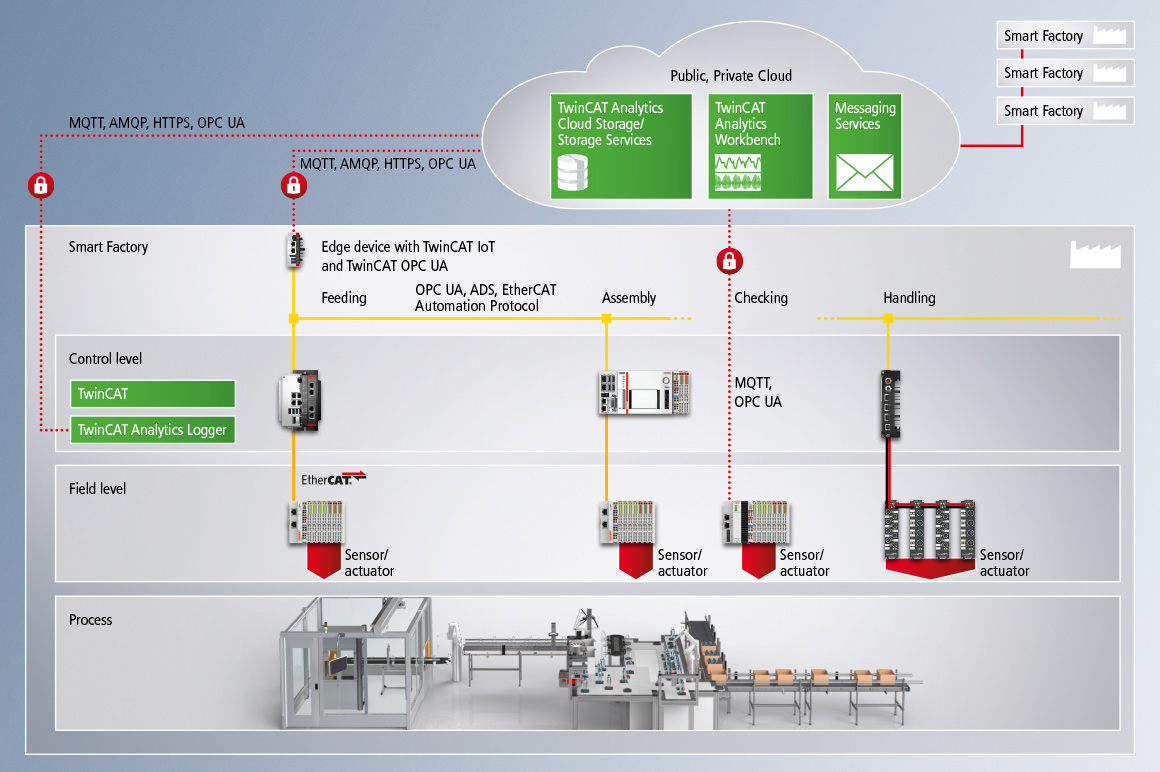
We developed the connectivity product family TwinCAT IoT for communication between the machine controller and cloud-based services. It supports the standardized Protocols OPC UA, AMQP, MQTT, and HTTPS for communication with common cloud systems such as Microsoft Azure™, Amazon Web Services and private cloud systems in enterprise networks. Built-in security mechanisms prevent misuse of data through unauthorized access and protect the company's intellectual property. With TwinCAT Analytics, process data is recorded and analyzed synchronously with the machine cycle and can be used for predictive maintenance and machine optimization. This way, all necessary information can be derived from the stored data with the appropriate analysis tools in order to optimize your machine in terms of energy efficiency or process workflow. Post-mortem analysis, diagnosis of sporadic errors, early detection of quality losses, and detection of production bottlenecks increase plant reliability and availability. Data analysis also provides you with information about the operational performance your machines, which you can use in future design and manufacturing processes to reduce costs and create ideal machine layouts.
Beckhoff technology also supports the upgrading of existing machines and systems. Different hardware and software products are available for retrofits, such as the ultra-compact C6015 Industrial PC with OPC UA interface, which can be integrated into an existing control cabinet to enable connection to the cloud. Depending on the application, the solution can also be used as an edge device for data preprocessing or concentration and data transmission.The EK9160 IoT Coupler is available for directly capturing digital and analog process values. It is especially suitable for retrofitting machines and allows simple transmission of data to higher-level systems via MQTT or OPC UA by means of preconfigured network access.
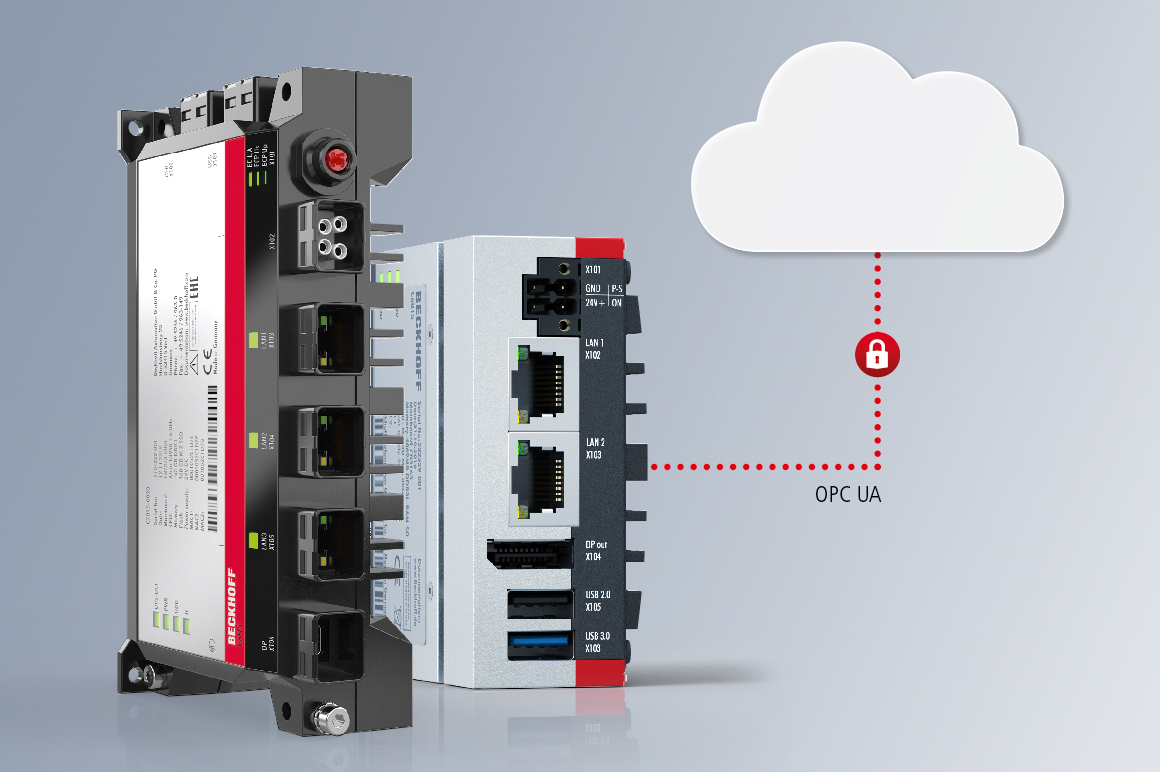
Modern plant concepts aligned to Industrie 4.0 and the Internet of Things (IoT) offer numerous advantages in terms of process efficiency, costs and quality. Beckhoff has integrated OPC UA interfaces into its automation platform for standardized communication between machines and master computers and for secure data transmission to cloud systems. Older machine generations can be made fit for the requirements of the digital factory with the C6015 ultra-compact Industrial PC. As a compact and powerful IoT edge device, it handles the compression and collection of data.
Since machines in the field often lack the mounting space for additional control components, Beckhoff offers the ultra-compact Industrial PCs from the C70xx series in protection rating IP65/67. The C7015 is mounted on the outside of the machine. Sensors, for example for Condition Monitoring, are read in via the EtherCAT P interface with the aid of the EtherCAT P Box Modules. This allows for the fast, uncomplicated retrofitting of existing systems with standardized access to the cloud.
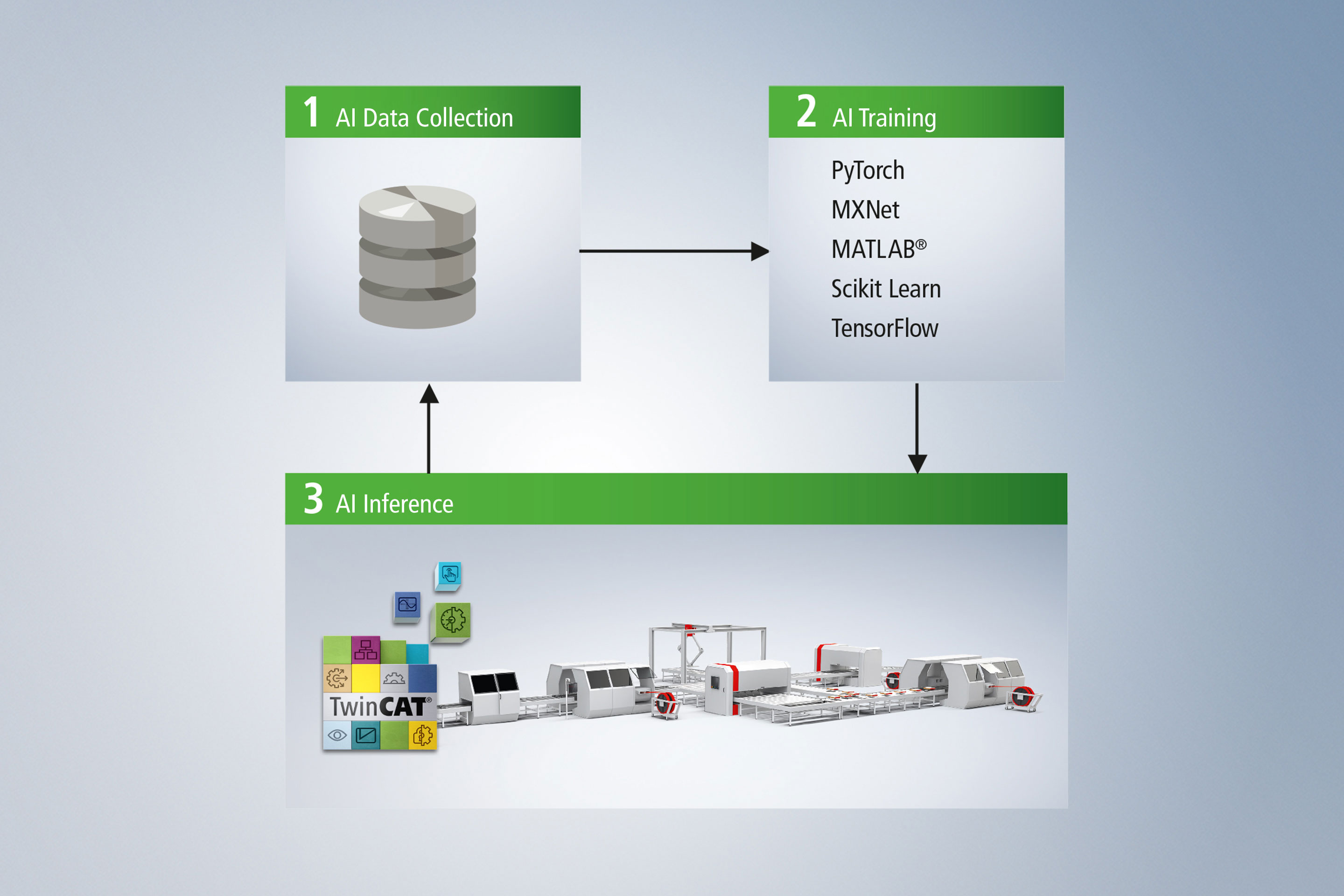
Beckhoff now offers a machine learning (ML) solution that is seamlessly integrated into TwinCAT 3. Building on established standards, it brings to ML applications the advantages of system openness familiar from PC-based control. In addition, the TwinCAT solution supports the execution of the machine learning models in real time, allowing it to handle demanding tasks like complex motion control. Its capabilities provide machine builders with an optimum foundation for enhancing machine performance.
The fundamental idea with machine learning is to no longer follow the classic engineering route of designing solutions for specific tasks and then turning these solutions into algorithms, but to enable the desired algorithms to be learned from process data instead. Beckhoff offers a closed workflow for the entire circulation of data and data-based algorithms and deployment. For all these scenarios there are a large number of established TwinCAT products available, such as the TwinCAT 3 Database Server, the Scope Server or the IoT Data Agent. Training is performed in established frameworks such as PyTorch, TensorFlow, SciKit-Learn, MATLAB®, or others. The learned model can simply be exported in a standardized format (ONNX) and handed over to the TwinCAT programmer.
In automation technology, this opens up new possibilities as well as optimization potential in such areas as predictive maintenance and process control, anomaly detection, collaborative robotics, automated quality control, and machine optimization.
Per continuare a usare myBeckhoff, è necessario accettare i termini relativi a controllo delle esportazioni e sanctions compliance.
La mancata accettazione di questi termini, comporterà il logout automatico da myBeckhoff.